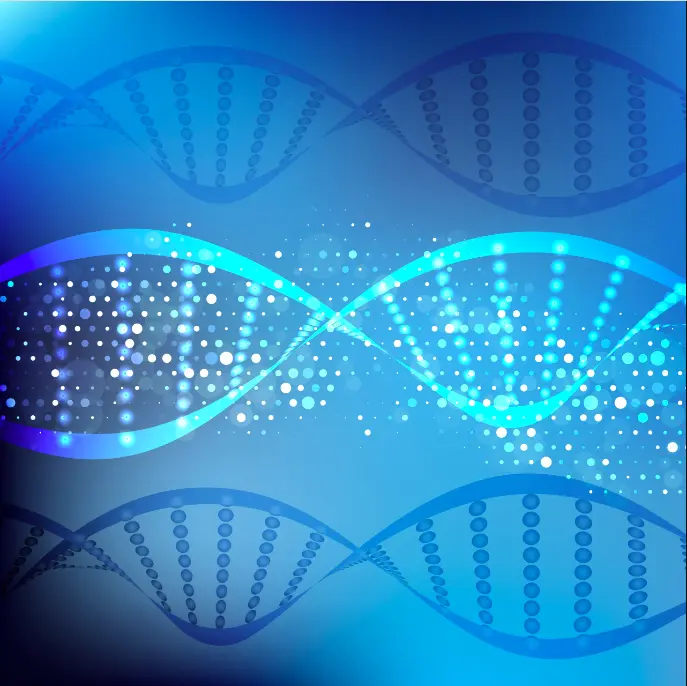Scientists have discovered that repetitive DNA sequences or non-coding DNA, thought to be harmless and inactive, may play a role in the onset of cancer.
Repeated DNA is a significant potential source of endogenous replication stress and has shown how the eukaryotic replisome can handle challenging sequences. The research demonstrates how non-coding DNA might obstruct our genome’s replication and repair processes, potentially causing mutations to build up. The replication of the genome has been revealed to be susceptible to disruption by non-coding or repetitive DNA patterns, which make up around half of our genome. However, scientists do not yet fully comprehend the underlying mechanism or how it can influence the onset of cancer.
Replicating DNA Synthesis
In order to better comprehend DNA replication, researchers at The Institute of Cancer Research, London, recreated the entire process in a test tube for the new study.
The ability of the researchers to explain how repeated DNA patterns can completely block DNA replication and increase the likelihood of errors, which can act as a precursor to cancer, allowed them to explain how repetitive DNA patterns are copied during DNA replication. This important information could eventually result in improved medications and therapies.
In the opinion of the researchers, the findings may also aid in improving the diagnosis and follow-up of some tumors, such as bowel cancer, where frequent errors in the replication of repetitive DNA sequences signal whether cancer is advancing.
Errors in DNA Replication Spur Damage Response
Researchers from the ICR, nonprofit research and educational organization, discovered that the DNA replication machinery could unwind repetitive DNA strands but occasionally failed to replicate the opposite DNA strand. The replication mechanism may fail as a result of this error, much like how DNA damage causes the replication process to collapse.
According to the research, repeated DNA patterns can cause a damage response signal, which would indicate that errors in DNA replication have occurred and need to be fixed.
The study further supports the association between non-coding DNA and cancer, which is known to increase cancer formation and progression due to DNA damage and the resulting genome instability.
The first concrete proof that DNA damage is the underlying cause of cancer was offered in the 1960s by researchers at the ICR. ICR researchers later showed that tumors with DNA repair defects might be genetically targeted with drugs known as PARP inhibitors in the early 2000s.
Now, the researchers are hoping that a better comprehension of DNA replication and how it might go incorrect will result in novel strategies to treat the condition.
Repetitive DNA Sequences Play an Important Role
According to the Study leader Dr. Gideon Coster, Team Leader in Genome Replication at The Institute of Cancer Research, London, the researchers were interested in discovering why cells appear to have a more challenging time copying repeated DNA sequences than other regions of the genome. As per this research, so-called non-coding DNA actually plays a significant and potentially harmful role in cells by preventing DNA replication leading to cancerous mutations.
The response brought on by repeating DNA sequences is now thought to be very similar to the reaction brought on by DNA damage, which is known to cause cancer. Therefore, this work significantly broadens the understanding of cancer, and the researchers are optimistic that it will someday lead to the development of novel therapies.
Developing Novel Cancer Treatments
According to Professor Kristian Helin, Chief Executive of The Institute of Cancer Research, London, by demonstrating how these repetitive patterns can prevent DNA replication and repair, this study contributes to the solution of the non-coding DNA riddle. It’s probable that this mechanism, which results in genetic instability, contributes to the emergence of cancer. This is especially true given that cancer cells begin to divide more quickly, which puts the DNA replication process under additional strain.
In order to develop novel cancer treatments that take advantage of inherent weaknesses in cancer cells, it is important to first understand the mechanisms behind genetic mutation and instability.
Story Source: Casas-Delucchi, C.S., Daza-Martin, M., Williams, S.L. et al. The mechanism of replication stalling and recovery within repetitive DNA. Nat Commun 13, 3953 (2022). https://doi.org/10.1038/s41467-022-31657-x
https://www.icr.ac.uk/news-archive/junk-dna-could-lead-to-cancer-by-stopping-copying-of-dna
Learn More About Bioinformatics:
Top Bioinformatics Books ↗
Learn more to get deeper insights into the field of bioinformatics.
Top Free Online Bioinformatics Courses ↗
Freely available courses to learn each and every aspect of bioinformatics.
Latest Bioinformatics Breakthroughs ↗
Stay updated with the latest discoveries in the field of bioinformatics.
Dr. Tamanna Anwar is a Scientist and Co-founder of the Centre of Bioinformatics Research and Technology (CBIRT). She is a passionate bioinformatics scientist and a visionary entrepreneur. Dr. Tamanna has worked as a Young Scientist at Jawaharlal Nehru University, New Delhi. She has also worked as a Postdoctoral Fellow at the University of Saskatchewan, Canada. She has several scientific research publications in high-impact research journals. Her latest endeavor is the development of a platform that acts as a one-stop solution for all bioinformatics related information as well as developing a bioinformatics news portal to report cutting-edge bioinformatics breakthroughs.












